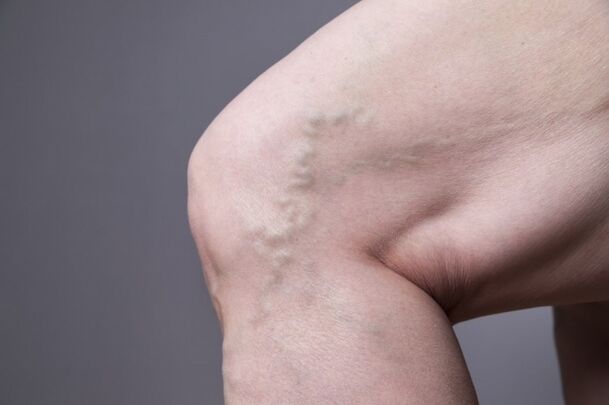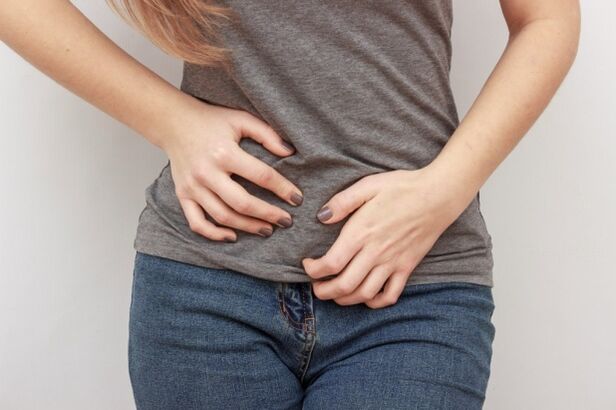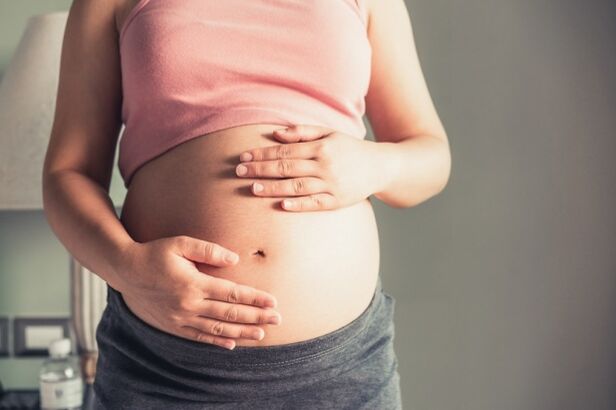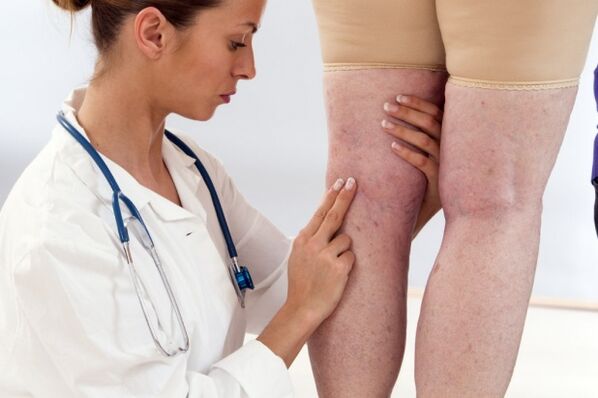Chronic vein deficiency and varicose veins are a widespread disease: according to statistics, every third person faces in developed countries.Special risk groups include fair sex representatives, whose pathology conveys physical and psychological discomfort.In this article we will consider why vascular disease occurs in women, what are their signs and symptoms, what to do for the treatment and prevention of the disease.
Varicose veins: Causes of varicose veins in women
According to statistical data, men are less likely to have varicose veins than women whose vessels are 1.5 times more frequently.What causes this pathological gender feature?

- Features -Hormone background features.During the monthly cycle, the female hormone background is subject to fluctuations, and during pregnancy, childbirth, lactation and menopause, this change is more important.The ratio of female sex hormones (estrogen and progesterone) has a direct effect on vascular wall conditions and blood viscosity.
- Hormone therapy.The combination of oral contraceptives receiving hormone therapy and taking the hormone background, thus causing changes in estrogen and progesterone ratios in the body.
- Wear shoes on heels and tight pants.Unknown shoes, narrow pants and jeans - all of which cause blood flow to the lower leg and pelvis, leading to the development of varicose veins.
In addition, exclusively women, prerequisites for pathological development, varicose veins in women can trigger the following factors:
- Genetically determined predisposition.According to statistics, the tendency for varicose veins is observed in 60% of cases if one of the parents has this pathology.
- Excessive weight.Obesity is one of the factors in the occurrence of varicose veins, as lower limbs are under pressure.
- Excessive load on the feet.If you are professionally involved in running, jumping or mastering, useful conditions are made for the development of problems with veins.
- Disorders of blood circulation caused by fixed pose.If you spend most of the day sitting or standing, this is a serious prerequisite for the development of veins.
- Unstable nutrition.Diet, poor fiber, vitamins and trace elements, leading to disorders that affect the blood vessel walls and blood composition.In addition, an unbalanced diet can cause constipation, which can also lead to changes in the veins - in particular, to the pelvic varicose veins.
- Diseases of the endocrine and cardiovascular system.Endocrine disorders cause changes in the hormone background, which in turn, is a prerequisite for the development of varicose veins.Cardiovascular pathology (especially hypertension) also triggers the development of problems with veins.

Varicose veins of pelvic veins in women
The development of pelvic vessels is a common problem, which is faced with 15-25% of reproductive women.The disease is often misunderstood as an infectious process and inflammation localized in the reproductive organs of the female genitourinary system.In light of the improper diagnosis, inappropriate treatment is prescribed and the patient is not helped.Therefore, adequate diagnosis and therapy problems for pelvic varicose veins are the urgent problem of modern phlebology and gynecology.
Blood supply to the pelvic organs is caused by the uterine and ovaries, as well as the plexus-vaginal-vaginal, bubble-vaginal, plexus, and so on.It is usually caused by blood stagnation, which can be caused by the following premises:
- The way of life is sitting;
- previously transferred gynecological disease;
- violations of hormone background (in particular - high levels of estrogen);
- History of pregnancy and childbirth;
- Congenital violations and obtaining a violation of connective tissue (ie collagen weakness).
Opinion is the nature of this vein in women is the presence of chronic pelvic pain syndrome.It is represented by pain in the lower abdomen, radiating to the genital zone, sacrum and throat.
Peaks of pain usually fall in the second half of the menstrual cycle, equipped with severe premenstrual syndrome and dysmenorrhea.Psychosomatic disorders can participate in the symptoms mentioned.

As mentioned above, the diagnosis of pathology is difficult because the symptoms of the disease in women can be misinterpreted as a sign of gynecological problems alone.Therefore, to make the right diagnosis, transvaginal ultrasound, dopplerography, phlebography, in some cases, diagnostic laparoscopy, will be required.
For the treatment of small pelvic varicose veins, both conservative and operating approaches are used.
In the first case, the purpose of the therapy is to improve the tone of the vein wall, the normalization of blood flow properties and blood viscosity.To solve this problem, the patient is prescribed venotonic, conducting hirudotherapy, ultrasound and magnetotherapy sessions, and training therapy.If the conservative therapy of this pelvic disease is ineffective, surgical intervention is performed - sclerosis or embolization with veins in pregnant women.
Problems with Vienna in pregnant women
Varicose veins are a problem for most pregnant women.It is caused by the changes that occur in the pregnant mother's body during pregnancy.During this time, there was a complete restructuring of the hormone background, which was directly related to the blood vessels.For example, estrogen growth leads to changes in the structure of the vein wall muscle and blood vessel development.

In addition to hormone changes that accompany the duration of pregnancy and birth, pregnancy and childbirth can trigger the development of veins in pregnant women and for other reasons.First and foremost, it is a weight gain and growth of loads on the lower limbs, as well as excessive tension that women in the labor experience during contraction.
During pregnancy, an increase in the amount of circulated blood is observed, which is due to the growth of plasma and red blood cells.
Venus disease in women: symptoms and signs
Depending on the level of development, varicose veins in the legs are shown in different ways:
- The early stages of the pathological process are easy not to observe, as the manifestation is usually minimal.The small vascular stars appear on the feet, in the evening there is a bit of discomfort, at the end of the day there may be slight swelling.Although the clinical picture described does not cause many concerns once you have the symptoms named, it is advisable to consult your doctor.
- If the disease is not found in the early stages and the treatment does not begin on time, the problem with the veins in the woman is exacerbated.The vein grid becomes more prominent, the characteristic nodes and cereals are clearly distinguished under the skin, swelling and rupture in the lower leg cause serious discomfort.
- If the disease is not treated or treated inefficient, it will enter into a neglected form.The affected veins are highly highlighted under the skin, there is persistent edema, seizures occur at night, the skin in the foot area can change color and covered with tropical ulcers.
Venus disease in women: Treatment
Two key approaches to solving this problem are distinguished: conservative and surgery.The first is usually used in the early stages of pathological development, while the second is allowed to combat later stages of the disease.

Conservative therapies include taking medicines, using funds for external use, visiting physiotherapy sessions, wearing compression knitwear, physical energy correction, daily routine, nutrition and beverage regime.In addition, you can use additional tools to combat varicose veins - for example, Norman® Legs Cream.Regular applications on lower limbs help to eliminate swelling, fatigue, severity and discomfort in the legs, loss of night seizures and decreases in vascular pattern expressions.
Due to natural composition, creams can be used during pregnancy.
Surgical intervention is intended for the removal of full or partial varicose veins.Modern vascular surgery can offer the following types of operation:
- A combination of phlebectomy.
- Freezing laser.
- Freezing radio frequency.
- Sclerosis.
If we talk about the treatment of veins in women 50-60 years old and in older patients, surgical intervention is usually not performed, as it is pressure for the body.























